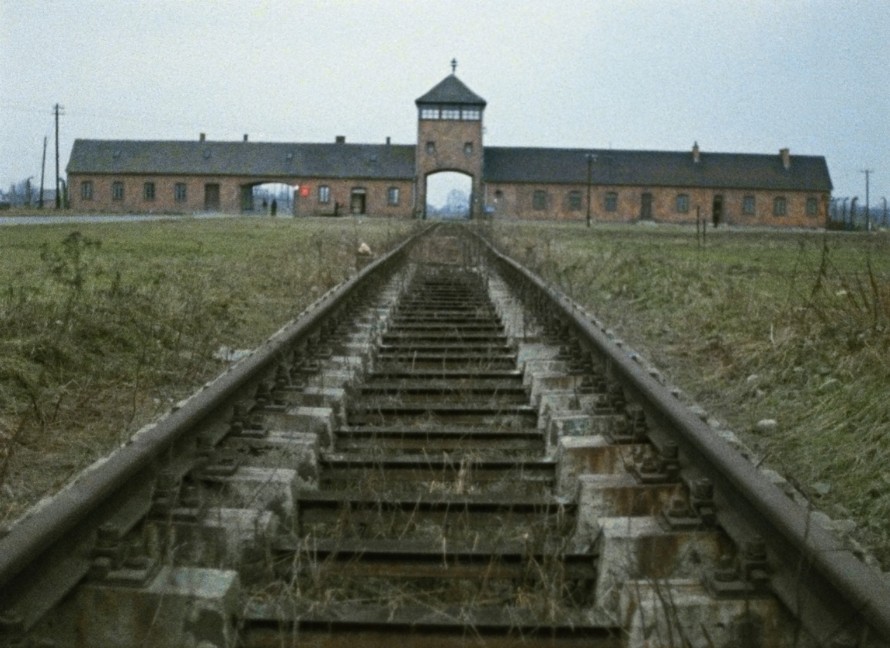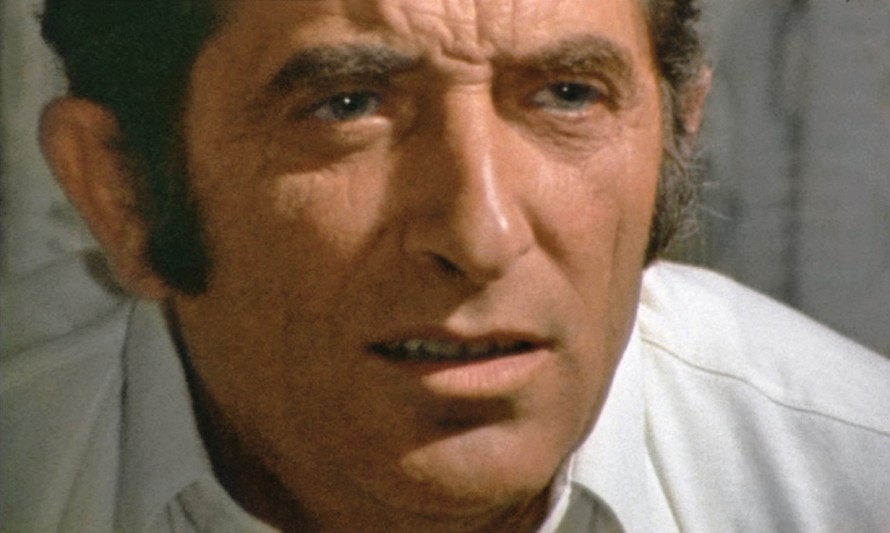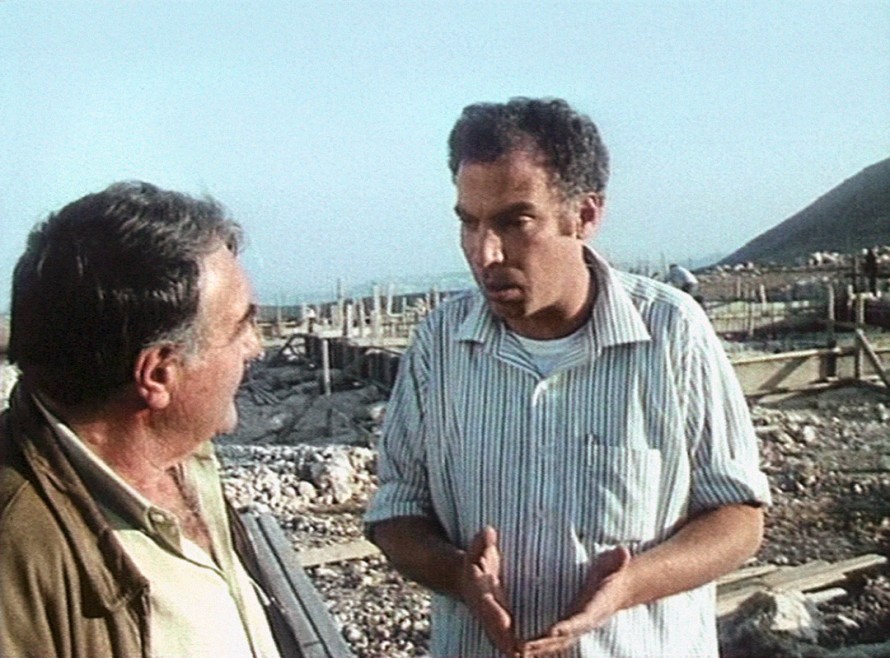2013 | Homage
Claude Lanzmann
When Steven Spielberg’s film Schindler’s List opened in Germany and France in March 1994, Claude Lanzmann felt the need to respond. He had harsh words for the film he considered an attempt to portray the extermination of Europe’s Jews in an anecdotal, fictionalised and pious way, albeit one that was lauded by critics and received eagerly by the public. "The Holocaust is above all unique in that it erects a ring of fire around itself, a boundary that you cannot cross, because it is impossible to convey a certain absolute horror; claiming to do so is to be guilty of the gravest transgression. Fiction is a transgression; I am deeply convinced that there is a prohibition on representation."

Shoah (1985)
Lanzmann’s judgement, which extended far beyond the specific instance of Spielberg’s film, was in keeping with the position on that subject that he had long since formulated with his own documentary, Shoah (1985, 1st Part, 2nd Part). Lanzmann’s film is a work of indirect representation, in which survivors talk about those who were murdered; in which benign-seeming landscapes stand in for the historical "Bloodlands" (Timothy Snyder); in which an “absolute horror” is evoked by absolute "omission" (Gertrud Koch) – Lanzmann dispenses completely with allegedly documentary images of the annihilation. In doing so, he draws "the boundary between what is aesthetic and imaginable and the unimaginable magnitude of the annihilation" (Koch). From that unimaginability sprung Lanzmann’s policy of irrepresentability, which contributed to a great degree to the “sacralisation of the Holocaust” (Peter Novick).
But despite any debate over its significance, Lanzmann’s colossal work Shoah has nonetheless since then proved to be immune to closure. With Sobibor, 14 Octobre 1943, 16 Heures, Lanzmann produced a shorter film about the "reappropriation of force and violence by the Jews" that carries the same weight of historical-political logic as the significantly longer film about the extermination. Increasingly, additional clusters of material not used in Shoah have been, and are being, made available. Lanzmann has “extracted” one chapter on Jan Karski, and his film Un Vivant Qui Passe (A Visitor From The Living,1997) is also, in the broad sense, part of the Shoah complex. Even some of the footage of his interviews with the controversial Jewish Elder in Theresienstadt, Benjamin Murmelstein, is available and Lanzmann plans to use that material as the basis for his next film, Last of the Unjust. So vis-à-vis the many forms of reappraising history, Shoah holds an authoritative place as documentation, memorial and case study, not least inasmuch as the term Shoah (from the Hebrew for "catastrophe") has, in intellectual discourse, replaced the term Holocaust, with its original meaning of sacrifice.

Yehuda Lerner in Sobibor, 14 Octobre 1943, 16 Heures (2001)
Conversely, Lanzmann’s magnum opus has also proven to be quite open to differentiation, supplementation and reflection. As a 20th century witness and cosmopolite, Claude Lanzmann also represents more than just an author of documentary work on crucial events. He himself embodies the drama of the danger to Jews and (in his case) survival. He is the son of an arranged union of two families of French Jews with deep roots in Eastern Europe, and was himself a victim of anti-Semitism and persecution. But early on he turned to the (communist) resistance movement and fought against the German occupiers. In the post-war years in Paris, he became an important member of the intellectual scene. As long-time companion to Simone de Beauvoir and a friend of Jean-Paul Sartre, he was well connected in the milieu. He broke off contact with Gilles Deleuze after the philosopher broke up with Lanzmann’s sister. As a journalist for "Elle" and the editor-in-chief of the magazine "Les Temps Modernes", Lanzmann proved to have manifold talents.
He visited Israel for the first time in the early 1950s, as a reporter, and there he found his life’s work. With his experiences and investigations, Lanzmann became one of the most important voices in post-war Judaism, despite the fact, or maybe precisely because he was, as he put it, "raised outside any religion, any tradition, any culture that might be called Jewish". His celebrated autobiography, "The Patagonian Hare", betrays the lifelong preoccupation with the forms and empirical knowledge of courage and cowardice that is often also the subject of his film work.

Claude Lanzmann and Uri Ariel in Tsahal (1994)
A committed Zionist, Lanzmann put his weight behind Israel’s right to exist as a sovereign entity. Pourquoi Israël (Israel, Why, 1973) and Tsahal (1994) document his intense sympathies with the creation of the Jewish state on historically Palestinian territory and its right to enforce that sovereignty. It was thus unavoidable that he would draw fire with those two films in particular. He was accused of idealising the Israeli military in Tsahal, ignoring the 1982 Lebanon War, and touching only briefly on the realities of the occupied territories. But those realpolitik-based reproaches undervalue the principal element of Lanzmann’s documentary work. The director specifically addressed the story of the 1943 Sobibor uprising only later. But within the legitimising logic of his oeuvre, it can stand as a motive for the founding of the militarily defensible state of Israel, which Lanzmann seldom criticises directly. The difficult distinction between anti-Zionism and anti-Semitism became manifest in Germany, at a Hamburg screening of Tsahal that was overshadowed by protests, and which prompted Lanzmann to describe the film’s critics as “anti-Semites”.
Appearing at the New York Public Library in 2012, Lanzmann was asked to provide seven words to “describe his life” and chose the following: Jew, trace, fear, death, life, honour, love. With his work, Claude Lanzmann has created a ring of fire not only around the state of Israel, but above all, around historical events, the irrepresentability of which serves as a crucial defence against any repeat.
Bert Rebhandl (Translated by Rebecca Stuart)